Mark BradleyProfessor of Therapeutic Innovation, Precision Healthcare University Research Institute, Queen Mary University of London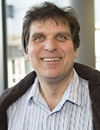 Mark received his doctorate from the University of Oxford in 1989, followed by post-doctoral studies at Harvard and returning to the UK as a Royal Society University Research Fellow (University of Southampton). In 1997 he was made a Professor of Combinatorial Chemistry setting up the UK’s Centre for Combinatorial Chemistry. In 2005 he moved to the University of Edinburgh, where he was Director of a £15M Interdisciplinary Research Collaboration in the area of Optical Molecular Imaging (Proteus 2014-2023) and a Doctorial Training Centre (60PhD) in Optical Imaging with Entrepreneurship. In Aug 2023 he moved to Queen Mary University of London as Professor of Therapeutic Innovation and part of the Precision Healthcare university Research Institute. He held an ERC Advanced Grant on “SmartMaterials” for cellular control. He is a co-founder of Ilika Technologies (2004) (which floated on AIMS in 2010), DestiNA Technologies (2010) and Edinburgh Molecular Imaging (2014) and Biocaptiva (2021). |
Stefano Da SaccoAssistant Professor of Urology, GOFARR Laboratory for Organ Regenerative Research and Cell Therapeutics in Urology, Keck School of Medicine – University of Southern California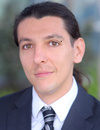 Dr. Stefano Da Sacco is an Assistant Professor at Keck School of Medicine, University of Southern California. Before joining the Faculty at USC he was a research fellow at University of Padova (Italy) and University of Southern California, where he obtained his PhD, and a postdoctoral fellow at Children Hospital of Los Angeles. His federally funded lab has developed a functional glomerulus-on-a-chip platform currently used to study disease mechanisms in membranous nephropathy, disease modeling and biomarker discovery. In addition, Dr. Da Sacco’s team studies human kidney development and Wilms Tumor, with a focus on the nephrogenic progenitor niche. |
Martin FrauenlobScientist, Cell Chip Group, TU-Vienna Dr. Martin Frauenlob, a Scientist at the Cell Chip Group of the TU Wien, Vienna, holds a Ph.D. in Transdisciplinary Life Science from Hokkaido University. Under Dr. Jian Ping Gong he worked on biocompatibility and inducing pluripotency in cancer stem cells on soft matter. Later he contributed to the Biomaterials and Microfluidics core facility at Institute Pasteur, Paris, collaborating on multi-tissue microfluidic devices, which he continues at the TU Wien. In his team, he tries to target challenges in biotechnology and biomedicine by combining innovative microfluidics, biosensors, and cell culture. |
Yan Yan Shery HuangProfessor of BioEngineering, University of Cambridge Dr. Huang is Professor of BioEngineering, University of Cambridge. She completed her MEng degree in Materials Science and Engineering from Imperial College London in 2007. She then pursued a PhD in Physics at Cambridge. She was a visiting researcher at University of Texas at Austin (2008), and an Oppenheimer Fellow and a Homerton College Junior Research Fellow (2011-2013). She is a recipient of the prestigious ERC Starting grant, and a fellow of the Institute of Fellow of the Institute of Materials, Minerals and Mining, UK. |
Marcel KarperienProfessor, University of Twente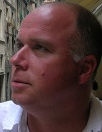 Marcel Karperien studied biology at Utrecht University. After graduation in 1991 he worked as a PhD-student at the Netherlands Institute for Developmental Biology and Stem Cell Research. He continued his career at the Leiden University Medical Center working on regulation of longitudinal bone growth and metabolic bone disorders. In 2007 he moved to the MIRA Institute for Biomedical Technology and Technical Medicine where he established the Department of Developmental BioEngineering. He is interested in developing new solutions for treating cartilage related disorders. His work is technology inspired and is characterized by a multidisciplinary approach. In his work in depth knowledge of the molecular and cellular biology of cartilage is combined with state of the art chemical- and nano-technology. Specific research topics are i) the identification of the molecular mechanisms underlying the pathophysiology of osteoarthritis, ii) the development of (stem) cell based strategies for repairing the damaged articular cartilage surface and iii) the development of new generations of biomaterials that can be used in a non-invasive manner for cell delivery in the diseased joint. Marcel Karperien has received awards from the American Society for Bone and Mineral Research (Young investigator award, travel grant awards), Dutch Society for Endocrinology (NVE), the European Calcified Tissue Society and the MIRA Institute for Biomedical Technology and Technical Medicine for his work. His work is supported by an unrestricted research grant from the Dutch Arthritis Foundation. |
Magdalena LorenowiczHead of the Advanced In Vitro Model Systems Department, Biomedical Primate Research Center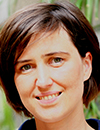 Magdalena Lorenowicz studied Biotechnology at the Jagiellonian University in Kraków. In September 2001 she moved to Amsterdam to start her Ph.D. research. During her Ph.D. studies she investigated the role of cAMP signalling in the regulation of leukocyte chemotaxis and endothelial barrier function. After completion of her thesis, Magdalena moved to the Hubrecht Institute in Utrecht, where supported by prestigious VENI award (2008) she focused on the mechanism of Wnt secretion, combining the genetics of C. elegans with cutting edge cell biology techniques in mammalian cells. In April 2012 she joined the Department of Cell Biology and Center for Molecular Medicine at University Medical Center Utrecht to set up her own research line investigating molecular mechanisms regulating the immunosuppressive and regenerative properties of the human mesenchymal stem stromal cells (MSC) with the ultimate goal to directly link her expertise in studying cell-cell communication with clinical applications. In 2015 she moved to Regenerative Medicine Center Utrecht, where she became a principal investigator, expanded her research group and worked on the interphase of fundamental research and regenerative medicine. In November 2022 she moved to the Biomedical Primates Research Center, where she is a head of the Advanced In vitro Models Systems (AIMS) department and continues to investigate biology of MSC and their in vivo function in context of different tissues with the final goal to improve MSC-based therapies. |
Simona MuraFull Professor, Université Paris-Saclay Simona Mura is Full Professor of Pharmaceutical Technology at the Faculty of Pharmacy of the University of Paris-Saclay. After completing her Pharmacist degree at the University of Cagliari in Italy, she pursued a PhD in Chemistry and Technology of Drugs, graduating in 2009 under the guidance of Professor A.M. Fadda. Her doctoral research focused on the design and in vitro evaluation of innovative vesicular systems for the topical delivery of drugs. Following this, she continued her academic journey by joining the research group led by Professor E. Fattal at the Institut Galien, UMR CNRS 8612, University Paris-Sud in France. In this post-doctoral role, she investigated the lung toxicity of biodegradable nanoparticles specifically designed for pulmonary drug administration. In 2011, she was promoted to the position of Associate Professor at the same university. During the period from 2011 to 2016, she was affiliated with the CNRS through the Chaires d'excellence program, conducting research in the team led by Professor P. Couvreur. In 2015, she has been appointed Visiting professor at the Osaka University (Group of M. Akashi) and in 2017 she integrated the prestigious Institut Universitaire de France (IUF) as Junior member. She has been awarded her HDR (Accreditation to conduct research) in 2018 and in September 2022 she has been appointed full Professor. She conducts research at the interface of chemistry, physical chemistry, and biology, with a primary emphasis on developing biomimetic drug delivery systems. Her work involves investigating the behavior of nanomedicines within the complex biological environment of the human body, from the administration site to the targeted action site. This research is achieved through the integration of biomimetic 3D culture techniques, microfluidic technology, and advanced characterization methods. |
Dasja PajkrtProfessor of Viral Pediatric Infectious Diseases, Amsterdam University Medical Center, Head OrganoVIR Labs Dasja Pajkrt | MD PhD MBA |is Professor of Viral Pediatric Infectious Diseases, University of Amsterdam Faculty of Medicine at the Amsterdam University Medical Center. |
Rebecca PompanoAssociate Professor, University of Virginia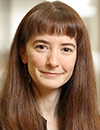 Dr. Rebecca Pompano is an Associate Professor and Shannon Center Mid-Career Fellow at the University of Virginia, in the Departments of Chemistry and Biomedical Engineering. She completed a BS in Chemistry at the University of Richmond in 2005 and a PhD at the University of Chicago in 2011. Dr. Pompano's laboratory has developed innovative approaches to model lymph node function in vitro, including in ex vivo tissue slices and microphysiological models, as well as 3D printing strategies and bioanalytical methods for culture and analysis of organized cells and tissues. She is currently a Gordon & Betty Moore Foundation Inventor Fellow. Dr. Pompano is a leader in the Immunoengineering and bioanalytical communities, having co-chaired the inaugural Gordon Research Conference for Immunoengineering in 2022 and the 2023 International Symposium on Microscale Separations and Bioanalysis. She was recently appointed to the Board of Directors for the Chemical and Biological Microsystems Society, which organizes the MicroTAS conference. As a faculty member, she is active in student-centered teaching methods and in efforts to make the scientific community welcoming and inclusive for all students and researchers. Additional information about her research group and their work is available at www.pompanolab.com |
Shuichi TakayamaProfessor, Georgia Research Alliance Eminent Scholar, and Price Gilbert, Jr. Chair in Regenerative Engineering and Medicine Wallace H. Coulter Department of Biomedical Engineering, Georgia Institute of Technology & Emory University School of Medicine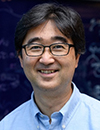 Prof. Shuichi Takayama’s research interests started with bioorganic synthesis at the University of Tokyo and Scripps Research Institute. Subsequently he pursued postdoctoral studies in bioengineered microsystems at Harvard University as a Leukemia and Lymphoma Society Fellow. He spent 17 years at the University of Michigan in the Biomedical Engineering Department and Macromolecular Science and Engineering Program, then moved to the Wallace H. Coulter Department of Biomedical Engineering at the Georgia Institute of Technology and Emory School of Medicine in the summer of 2017. He is an associate editor of Integrative Biology and recipient of the Pioneers of Miniaturization Prize. |
Dik van GentAssociate Professor, Erasmus Medical Center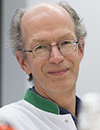 Dik van Gent studied biology in Utrecht and did his PhD research at the Netherlands Cancer Institute (Amsterdam) under the supervision of Prof. R.H.A. Plasterk. He investigated various aspect of the HIV DNA integration reaction. After receiving his PhD in 1993, he did three years of post doc research at the National Institutes of Health in Bethesda (USA) under the supervision of Dr. M. Gellert. |




